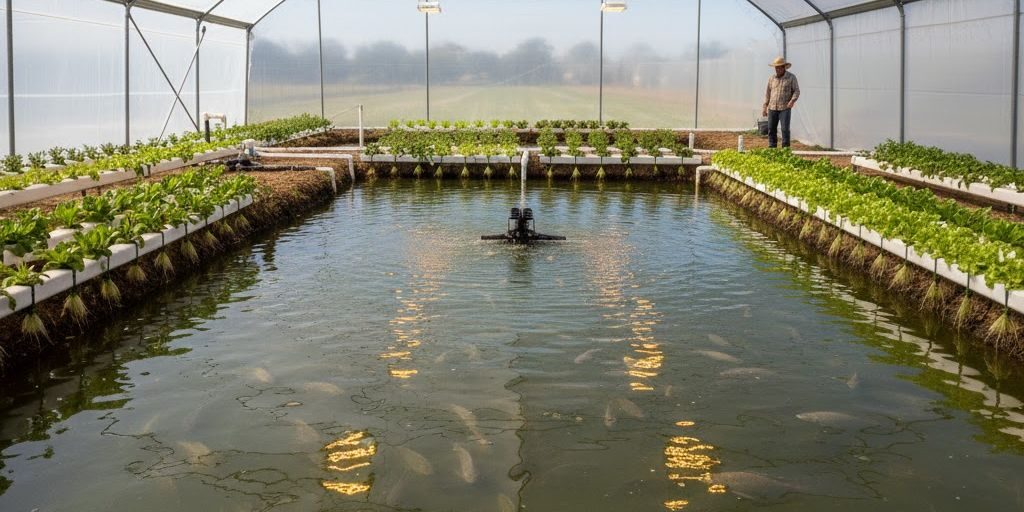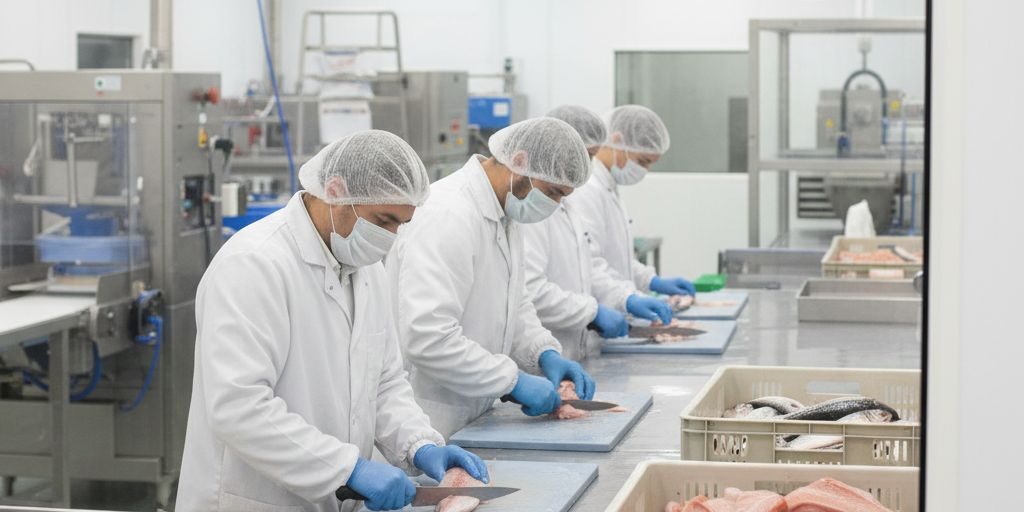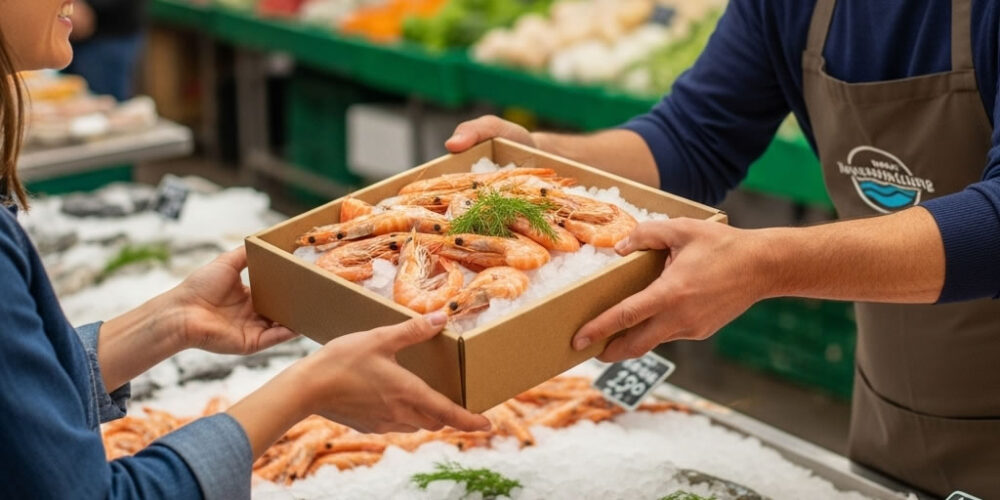- Software Gestor para Aquicultura
- (85) 2139-6730
- contato@despesca.com.br
10 Promising Aquaculture Market Niches: Innovation and Profitability

Correct Pricing for Aquaculture: Calculate Your Fish and Shrimp Prices
06/10/2025
Solar Energy in Aquaculture: Calculate the Return on Investment to Get Rid of Your Electricity Bill
08/10/2025The global aquaculture sector is experiencing significant growth, and with the increasing demand for seafood, new opportunities are emerging for producers seeking to differentiate their operations. Exploring promising aquaculture market niches is a strategic approach to add value to production and, consequently, boost business profitability. From sustainable technologies to the utilization of valuable by-products, the array of possibilities is vast and caters to diverse investment profiles worldwide.
This article details ten innovative segments that are shaping the future of fish and shrimp farming. Furthermore, essential technical information is provided for those interested in investing in these evolving areas.
1. Biofloc Technology (BFT) Shrimp Farming
Marine shrimp farming using Biofloc Technology (BFT) is, without a doubt, one of the most promising niches. This technology allows for extremely high stocking densities, often ranging from 100 to 700 shrimp per square meter, significantly outperforming conventional open-pond systems. The key advantage of BFT lies in its ability to reuse water efficiently and promote the formation of microbial flocs, which serve as a supplementary food source for the animals.
Technically, the system relies on maintaining a high carbon-to-nitrogen ratio (C:N) in the water, typically above 12:1. This balance actively stimulates the growth of heterotrophic bacteria, which effectively convert toxic nitrogenous compounds, such as ammonia, into beneficial microbial biomass. As a direct result, there is a drastic reduction in the need for water exchange and a consistent improvement in the zootechnical performance of the shrimp.
2. Ornamental Fish Farming
The global market for ornamental fish is robust and continually expanding, generating substantial revenue annually through both domestic sales and international exports. Cultivating high-value species, such as Discus fish, Koi carp, or exotic tropical varieties, presents an excellent opportunity. Success in this specialized niche hinges on mastering advanced reproduction and larviculture techniques, coupled with rigorous sanitary control to guarantee the health, vibrancy, and aesthetic appeal of the animals. Furthermore, proper acclimation and safe transportation methods are critical steps for successful commercialization across diverse markets.
3. Algae Cultivation for Industry
Algae, encompassing both macro and micro varieties, represent a remarkably fertile ground for innovation within aquaculture. These versatile organisms can be cultivated for a multitude of industrial purposes, ranging from the production of advanced biofertilizers and sustainable biofuels to the extraction of high-value compounds for the burgeoning food and cosmetic industries. Macroalgae cultivation, for instance, can be strategically integrated with existing fish and mollusk production systems. This can actively contribute to the removal of excess nutrients from the water. Conversely, microalgae are recognized as rich sources of proteins, beneficial lipids, and valuable pigments, such as astaxanthin, which is notably utilized for the natural pigmentation of farmed salmon.
4. Aquaponics Systems
Aquaponics stands as a prime example of synergistic integration, seamlessly combining aquaculture (raising aquatic animals) with hydroponics (cultivating plants in water). In these highly efficient recirculating systems, the nutrient-rich waste generated by fish, primarily in the form of ammonia, is biologically converted by nitrifying bacteria into nitrates. These nitrates then serve as essential nutrients, directly nourishing the growing plants. This innovative closed-loop system facilitates the sustainable co-production of both fish and vegetables, achieving impressive water savings of up to 90% when compared to traditional agricultural and aquacultural methods. Tilapia is frequently favored in aquaponics due to its robust nature, rapid growth rate, and adaptability to varied conditions.
5. Premium Fish for High Gastronomy
High-end restaurants and acclaimed chefs worldwide are in constant pursuit of top-tier, traceable products. The cultivation of premium species, such as sea bass, grouper, cod, or amberjack, is specifically tailored to meet this discerning demand. Farming these high-value species typically necessitates a greater investment in advanced technology and precise management protocols. However, this commitment is often rewarded with higher market prices and the potential for stable, long-term supply contracts. The assurance of unparalleled freshness and complete product traceability are critical competitive advantages in this demanding market segment.
6. Sustainable Feed Ingredient Production
Feed costs often represent a substantial portion of overall aquaculture production expenses. Consequently, the development and production of alternative, sustainable ingredients for aquaculture feed manufacturing constitute a strategic and vital niche. Innovative approaches include the cultivation of insects, such as black soldier fly larvae (Hermetia illucens), and microalgae strains rich in proteins and essential oils, particularly omega-3 fatty acids. These advancements offer promising avenues to reduce the industry’s reliance on traditionally utilized, and often less sustainable, inputs like fishmeal.
7. Fish Collagen Extraction
The global market for fish collagen peptides is experiencing robust expansion, primarily driven by growing demand from the nutraceutical and cosmetic industries. Fish skin and scales, from species like tilapia or cod, which were often considered waste by-products, are now recognized as valuable raw materials for the extraction of hydrolyzed collagen. This presents an excellent opportunity to significantly add value to aquaculture by-products, effectively transforming what was once considered waste into a high-value product with substantial international demand and diverse applications.
8. Recreational Fishing Operations
Commercial operations focused on stocking ponds for recreational “catch and pay” or “put and take” fishing continue to be a popular leisure activity in many regions. This niche requires a consistent supply of various fish species and sizes, such as trout, catfish, or carp, to ensure a satisfying experience for recreational anglers. Producers specializing in this segment can establish enduring partnerships with recreational fishing facilities, guaranteeing a steady and reliable market for their output.
9. Oyster and Mussel Cultivation
Mollusciculture, the cultivation of bivalve mollusks like oysters and mussels, is an environmentally friendly activity with significant potential, particularly in coastal regions globally. These organisms are natural filter feeders and do not require supplemental feed, thriving on the plankton naturally present in the water. The success of mollusk cultivation is directly linked to maintaining optimal water quality and implementing constant monitoring protocols to prevent contamination from harmful toxins.
10. Aquacultural Tourism
Transforming an aquaculture farm into a tourist destination represents an innovative approach to diversify revenue streams. Aquacultural tourism can encompass a range of experiences, from educational guided tours showcasing the farming processes to unique gastronomic experiences featuring tastings of fresh local products, and even engaging sport fishing activities. The growing interest in agritourism and sustainable practices indicates a promising future for this interactive and educational niche, offering consumers a direct connection to their food sources.
Diversification and the relentless pursuit of innovation are absolutely fundamental for success in modern aquaculture. Carefully evaluating the potential of each of these promising aquaculture market niches and meticulously planning investments can be the decisive factor in establishing a prosperous and sustainable business for years to come.




